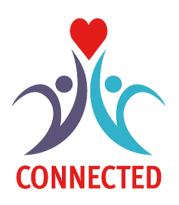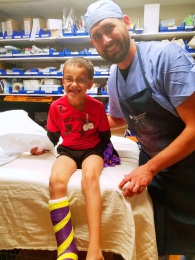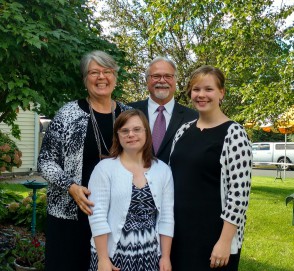Medicaid Matters
MEDICAID AND CHILDREN AND YOUTH WITH SPECIAL HEALTH CARE NEEDS AND DISABILITIES
My name is Pam; my husband and I have 3 daughters. Our youngest daughter, Amber, was born with severe congenital hydrocephalus (water on the brain). It caused severe damage to her brain. She is nonverbal. She is unable to walk or sit independently and uses a wheelchair. She relies on us for every aspect of her care.
We have TEFRA/Medicaid for her as her secondary insurance. It has enabled us to provide the proper and necessary care that she requires. Through TEFRA/Medicaid we have been able to modify our house and van so they are accessible for her. Without Medicaid Amber would be leading a completely different life than she does now. She is able to be fully included in our home and in our community. We would not been able to provide those things for her financially if it wasn’t for that additional support. Amber’s quality of life will be forever changed thanks to Medicaid.
Sincerely,
Pam
Over 43 percent of CYSHCN under age 18 are covered by Medicaid or the Children’s Health Insurance Program
Children and youth with special health care needs (CYSHCN) have a broad range of chronic illnesses and/or disabilities (e.g., cerebral palsy, epilepsy, asthma or autism). Nearly 20 percent
of U.S. children (14.6 million children under age 18) have special health care needs. Medicaid is a vital program for these children and youth.
For many of these children, Medicaid is the only source of financing for their care. Even for those children who have private insurance, Medicaid often serves as a “wrap-around” to augment their coverage. For example, some medical equipment and assistive devices (such as hearing aids) may not be covered under traditional insurance plans but are available through Medicaid. About 36 percent of CYSHCN children rely solely on Medicaid to get the services they need. Another 8.2 percent rely on Medicaid to supplement their private insurance coverage.
Medicaid helps families afford the services and medicines their children need, often saving them from bankruptcy. In some cases, Medicaid allows parents to work by providing home health care
for seriously ill children who need it.
If Medicaid is “block granted” or otherwise subject to substantial cuts, states will ultimately be forced to significantly reduce Medicaid coverage and services, leaving the health and well-being of many CYSHCN and their families in peril. For example:
- Santina – a teen from Pennsylvania with Rett Syndrome and epilepsy – could lose access to her medication. And, her single mother would probably have to quit her two jobs if Medicaid’s safety net were not there to provide a home health care worker for her daughter.
- The family of Joshua – whose life-saving liver transplant was paid for by Oregon Medicaid -- would not have the means to pay for the 22 medications he must take every day.
- Jason, from Ohio – who has developmental delays that leave him unable to speak, walk, or use his hands in a coordinated fashion – would lose the early intervention, speech, occupational, and physical therapies that will one day allow him to walk, speak and use his hands.
Childrens-Health-Groups-Medicaid-Caps-St[...]
Adobe Acrobat document [316.4 KB]
If federal Medicaid payments to states are capped, states will have strong incentives to cut coverage or reimbursement for the services, medications, and supplies on which these children depend. These cuts would jeopardize the health of the nation’s most vulnerable children and hurt families and communities financially.
- If states choose to impose cost sharing for Medicaid benefits, then those with the highest medical needs will suffer most, and may not be able to afford optimal care.
- If states choose to cut reimbursement to pediatric specialists or hospitals, it will be more difficult for CYSHCN to access the providers most competent to treat them.
- Parents not able to get needed home care for their children will have to leave the workforce to provide this care, and more families would be forced into medical bankruptcy.
- State and local taxpayers will end up with greater costs due to uncompensated care and the increased use of emergency rooms that would result from inadequate coverage.
Medicaid is an essential program that protects the health of the country’s most vulnerable children and the well-being of their families. These protections must be preserved.
Charlie was born in August of 2009. I noticed he was not meeting his developmental milestones right away. Our days were filled with medical appointments trying to find a diagnosis and course of treatment for his many health concerns. Charlie has 15 different specialty doctors he sees regularly. He needs physical therapy, speech therapy, occupational therapy and several medications to support his health needs and remain healthy. Medicaid makes these necessities possible.
I cannot imagine where Charlie would be today without access to those medical cares. He might not even be alive. I am convinced that access to these healthcare services and supports through Medicaid are the reason why Charlie is a thriving first-grader versus a sickly child unable to attend school and community events. Without Medicaid, I don’t know where we would be today. And I am so thankful each day that we have this support for the level of care Charlie receives.
Tricia
How having a child with disabilities impacts families in Minnesota
Work
The National Survey of Children with Special Health Care Needs 2009 /2010 (NS-CSHCN 2009/10) revealed that 23.9% of
Minnesota’s families of CYSHCN have stopped working or cut back work hours because of their child’s health condition. That percentage is slightly higher than it was in 2005/06 when it was
21.1%.
Families who are the most likely to have employment impacted are those whose children have functional limitations (56.7%). MN ranks 5th nationally in the percentage of families of children with functional limitations who cut back hours and/or stopped working (national range 37.4%-60.0%).
Financial Hardship
- Among Minnesota families of CYSHCN, 23.1% are experiencing financial problems due to their child’s special health care needs ranking Minnesota 16th among the states. This is an increase in the percentage of families experiencing financial hardships from 19.5% in 2001 when Minnesota ranked of 35th among states and 18.3% when Minnesota ranked 27th in 2005/2006.
- Families of children with functional limitations are significantly more likely to experience financial problems than those managed by medications alone and those with above routine need for services alone.
- Families of children with conditions that are emotional/developmental/behavioral in nature are significantly more likely to experience financial problems than those without such conditions.








